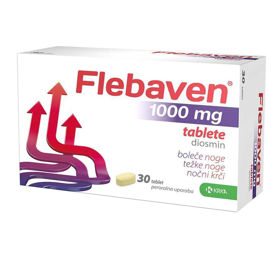Customer question:
Deep vein thrombosis - what is it? What therapy/treatment is recommended for this? Anonymous Customer
Pharmacist's answer
A blood clot (thrombus) develops in one or more deep veins in the body, usually in the legs, and causes deep vein thrombosis (DVT). Discomfort or edema in the legs may be due to deep vein thrombosis. However, in some cases, there are no apparent signs.
Deep vein thrombosis can occur if you have certain medical conditions that affect blood clotting. For example, a blood clot in the legs can also develop if you don't move for a long time, during a long journey, have a sedentary lifestyle, or lie in the hospital after surgery or injury.
Deep vein thrombosis can be a severe condition because blood clots can break loose in the veins, travel through the bloodstream, and get "stuck" in the lungs, blocking blood flow (pulmonary embolism). When DVT and pulmonary embolism occur together, it is called venous thromboembolism.
Learn the symptoms of deep vein thrombosis.
Deep vein thrombosis most often occurs in the veins of the legs or arms. Up to 30% of people with DVT have no symptoms, but sometimes the symptoms are very mild and may not be a cause for concern.
Symptoms associated with acute DVT include:
- swelling of the leg or arm (sometimes this happens suddenly)
- pain or tenderness in the leg or arm
- the area of your leg or hand that is swollen or painful may be warmer than usual
- red or discolored skin
- veins close to the surface of your skin may be larger than normal
- pain in the abdomen or flank (when blood clots affect veins deep in the abdomen)
- severe headache (usually comes on suddenly) and seizures (when blood clots affect the blood vessels in the brain)
Health options
Treatment for deep vein thrombosis includes medications called anticoagulants (blood thinners), compression stockings, and elevating the affected leg at different times throughout the day. In a small number of cases, invasive treatment may be necessary when deep vein thrombosis is advanced.
To diagnose a GVT, your doctor will talk to you about your symptoms and examine you to look for signs of a GVT, such as swelling and pain. If your doctor thinks you have deep vein thrombosis, he may suggest an ultrasound scan.
A blood test called a D-dimer test may also be done to help detect blood clots. If your doctor thinks there is a risk that part of the blood clot has traveled to your lungs, they may order a chest CT scan.
The drug: Detralex provides excellent support and help to the blood vessels.
Zanimivo branje: Tromboflebitis
Zanimivo branje: Tromboza znaki











